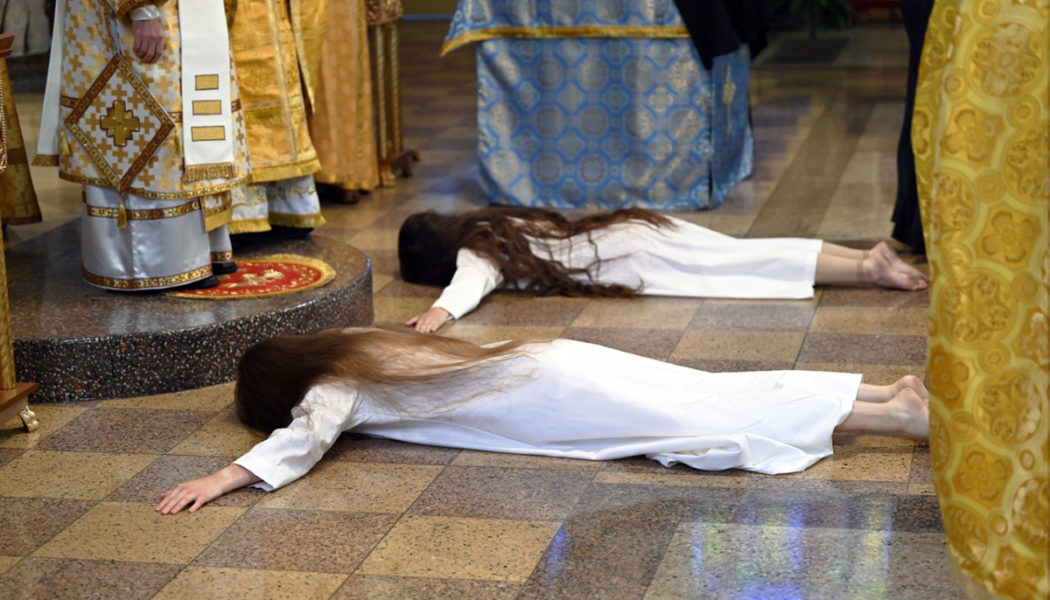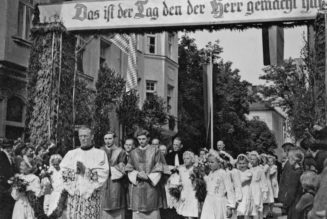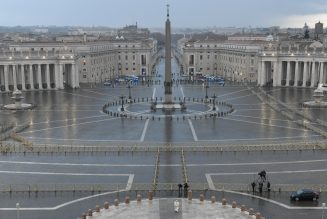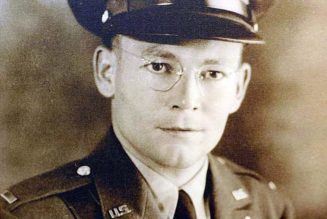The rarely-seen rite is incredibly rich, and offers Christians many themes for our contemplation.
It is a rare thing to witness the life profession of a Byzantine nun. I was blessed to view the livestream of Sister Natalia and Sister Petra’s life profession via Christ the Bridegroom’s Facebook page.
I was struck by the words of the Gospel of St. Luke — “Put out into the deep and let your nets down for a catch” (Luke 5:4). It occurred to me that these words of Our Lord serve two purposes. One, it is a call to all the baptized. No matter our state in life, the baptized are called to lives of heroic holiness. Second, it served as a firm reminder to the newly-professed Mother Natalia and Mother Petra, of their commitment to live out their baptismal call through the constant striving of monastic life.
As I’ve written before, the monastic life is a special commitment to the exercise of our baptismal call. These two beautiful nuns serve as a reminder to all the faithful of the precious and life-giving gift of the waters of baptism.
The ceremony of a life profession in the Byzantine Rite is a beautiful expression of the Church’s constant call to repentance and conversion. This occasion was served within the context of a hierarchical Divine Liturgy. Christ the Bridegroom Monastery is under the omophorion (pallium) of Bishop Milan Lach of Parma, who received Mother Natalia and Mother Petra’s profession.
The rite begins following the Troparion of the day. For this particular service, the Troparion of the Prodigal Son is used highlighting the perpetual call to repentance. Those making the profession are escorted to the narthex of the Church to exchange their habits for the vlasyanitsa, a white garment symbolizing the baptismal gown. This garment will also one day serve as their burial garment. They are processed back into the Church with the monastic community and make three prostrations, symbolizing the three immersions of baptism. They process with arms crossed upon the breast as if bound, and the last prostration is made at the feet of the bishop, where they pray for the grace to be admitted into the ranks of the penitents.

The liturgical posture of prostration is the most profound sign of penance. They remain prostrate until the bishop, as an icon of Christ, raises them to their feet — just as Christ raises us from our sins. The bishop next questions them to ensure that they make their profession freely. He ends the series of questions with a catechesis. Beautifully, he states:
Our most compassionate and all-merciful God opens the deep and pure affection of His unsearchable goodness to everyone who comes to Him, full of desire and fervent love. And He has Himself said: A woman will forget the child she has brought forth before I forget you! Seeing your good and generous desire, He lends His own strength to you to fulfill His commandments. May He receive you and embrace you, may He shield you; may He be your strong rampart against the enemy; may He be your rock of endurance and your source of consolation; may He fight alongside of you in battles, inspiring you with courage and flooding your soul with His peace; may He be with you when you fall and when you rise up again, consoling and cheering your heart with the comfort of His Holy Spirit.
The professed are now presented with the schema or paramandyas (a square of black wool embroidered with a red cross and the instruments of the Passion). Before she is clothed in this, a pair of scissors is presented upon the Book of the Gospels for her tonsure. Three times the bishop throws the scissors down the aisle of the Church, each time a greater distance. The candidate must retrieve them; this demonstrates her resolve to make this commitment and the free gift of herself to Christ.

Following the tonsure, she is clothed in the paramandyas, her new habit, and monastic mantle (mandyas). Then the klobuk (her monastic “hat,” a stiffened cylindrical cap with veil) is placed upon her head with the words:
Our sister Mother (name) takes the helmet of salvation and of hope that never falters, that she may be able to withstand the snares of the Devil. This is the sign of her humility and unfailing obedience, a token of her love for the wisdom of the spirit, of her firm intention to turn her eyes away from the foolish vanities, in the name of the Father, and of the Son, and of the Holy Spirit.

She is shod in sandals, given a prayer rope, belt, ring and her profession cross. Lastly, she is led before the icon of Christ on the iconostasis by her hegumena (abbess) and spiritual father and there she will remain with a lighted candle and her hand cross for the duration of the Liturgy.
There are several themes of the rite that are worthy of contemplation. First, espousal. Those who make their life profession are no longer called “Sister” — rather, they are called “Mother.” This title expresses their fruitful spousal union with Christ.
Second, baptism. Just as at her baptism, her sponsors/godparents were questioned, so the new Stavrophore (Cross-bearer)nun must answer truthfully the questions of her bishop. The Desert Fathers saw monasticism as a “second baptism,” so she is presented with a lit candle (preferably her own baptismal candle) to make the connection to her baptismal promises even more evident.
Lastly, the theme of repentance. The professed approaches the bishop bare-headed and unshod. It is he, standing in the place of the Merciful Father, who will put a robe on her, a ring, and sandals (just like the Father in Luke 15:22).
In her pre-profession letter, Mother Natalia reminded her family and friends that although the day is certainly beautiful, it is a day of somber reflection on our need for Christ’s healing and our repentance. The joy experienced, is not yet the joy of one who has run the race (2 Timothy 4:7), but the joy of the one sinner who has repented (Luke 15:7).
Any time the Church celebrates a monastic profession, it is a blessing for all the faithful. The monastic life reminds us all of the need for repentance and the infinite and eternal value of our baptism. In a time when our culture finds very little value in anything, we in the Church can be thankful that these nuns have made a permanent and visible commitment to the pursuit of holiness. Let us all hasten together toward Christ our Bridegroom!
Let us pray for the newly professed Stavrophore nuns, Mother Natalia and Mother Petra!
If you wish to support Christ the Bridegroom Monastery you can visit their website. You can view the entire profession Liturgy on YouTube, where you can also see their newest production on the monastic life called “Be Poor With Me.”
[embedded content]
Join Our Telegram Group : Salvation & Prosperity








